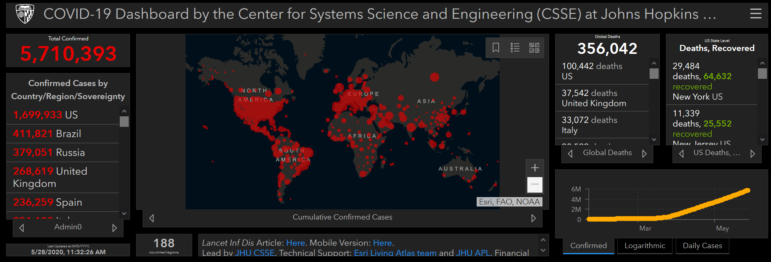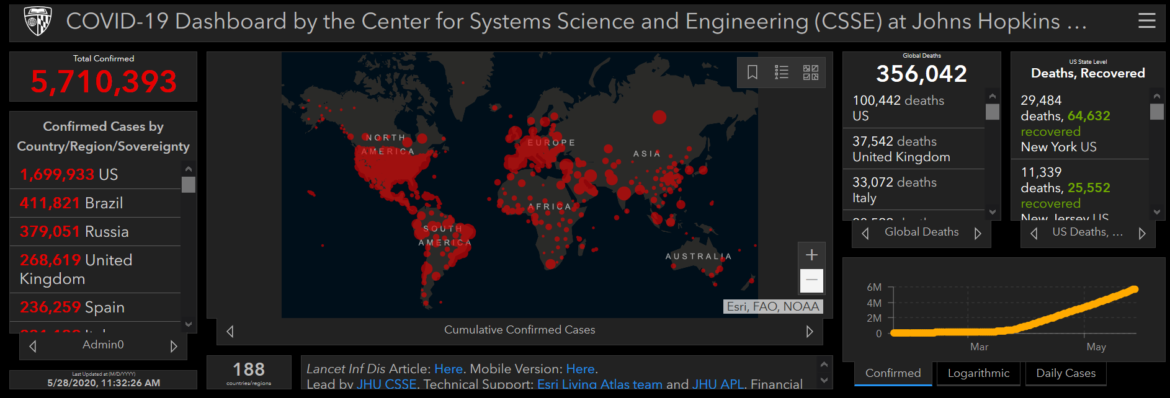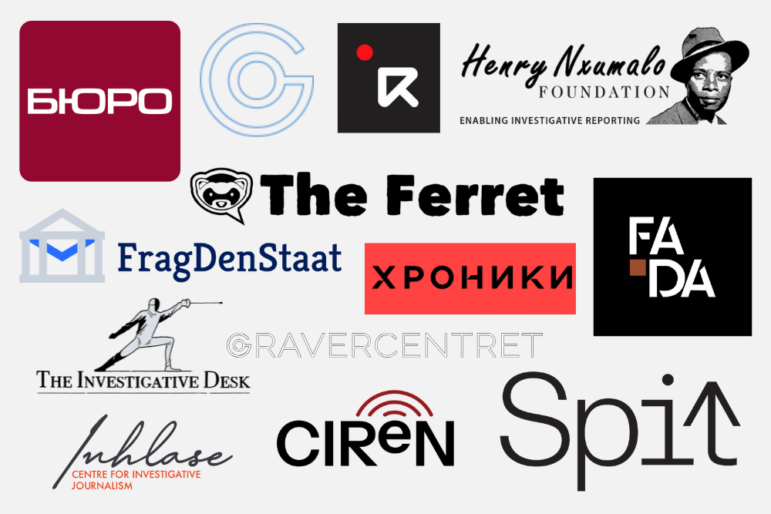

Investigating the Pandemic: A Guide to Sources of Data

Screenshot of the global COVID-19 Dashboard at John Hopkins University. This image is from May 28.
GIJN has created a multi-part guide on where to obtain data about the spread of COVID-19 and its consequences. Sources are listed on a spreadsheet, and are divided into the following categories, which can be accessed through the tabs at the bottom of the document:
Official International Sources
Our spreadsheet starts with a collection of international sources for official information on the pandemic, from the World Health Organization and other international organizations.
Global Data — Unofficial Sources
Unofficial global data is available from institutions such as the Johns Hopkins University Center for Systems Science and Engineering, the University of Oxford Martin Programme on Global Development, and Worldometer.
Key National Sites
Here are links to major national sites. We also point out some influential unofficial datasets, created by The New York Times, The Atlantic, and Der Spiegel.
Pandemic Projection Models
These models, created mainly by universities, are critical to understanding the future course of the pandemic. GIJN’s list includes more than a dozen, and a site that compares them all. We also include materials to help journalists understand the models.
Government Policy Responses
What governments have done in reaction to COVID-19 has been collected by major international bodies such as the International Monetary Fund and others. The resources include summaries of financial actions, school closures, and travel restrictions.
Economic Data
The economic toll is being measured in many ways. Sources in this section provide data not only about the pandemic’s overall impact, but also about its effects on jobs, on trade, on the flow of remittances.









